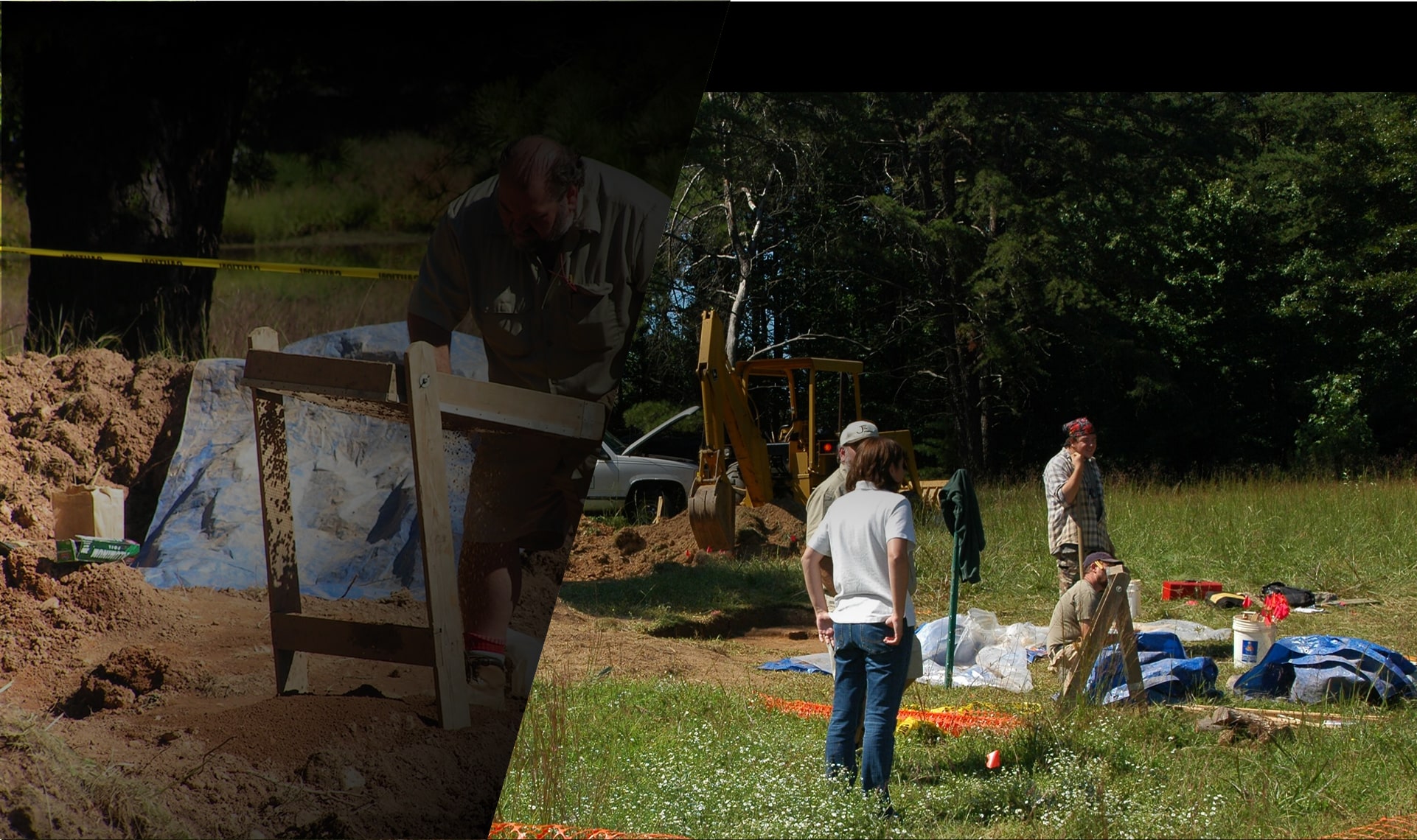Archeological field surveys are important in preserving our heritage resources for future generations. Surveys typically occur in three major phases, each with goals and methods. This blog will closely examine each stage of the cultural resources survey process. Understanding the phases can help show the care and due diligence taken to honor the past while allowing progress on construction projects to continue.
Phase I Survey: Identification
The first phase of a cultural resources survey identifies whether archaeological sites or other historic resources exist within a project’s Area of Potential Effect (APE).

Archaeological Consultants will carefully traverse the APE, walking spaced transects in what is known as a Systematic Archaeological Survey. They record any evidence of archaeological sites or other historic/cultural resources in writing and through photography. Resources may be hidden underground or visible on the surface.
If resources are identified during the Phase I Survey, the team maps, photographs, and documents them thoroughly. They also determine whether further study may be needed during Phase II Evaluations to assess eligibility for the National Register of Historic Places. Resources not needing further assessment may be documented and construction can continue with proper monitoring and protection procedures in place.
Phase II Evaluation: Assessment

A Phase II Evaluation involves further defining and assessing resources found during the initial Phase I Identification Survey. This provides the information needed to evaluate eligibility for the National Register of Historic Places.
Archaeological Surveys and Cultural Resource Specialists first determine the boundaries of sites and any other resources identified in Phase I surveys. They may do this by digging small shovel test holes, using remote-sensing equipment like ground-penetrating radar, or examining historical documents and maps.
Once the extent of resources is determined, Phase II evaluations focus on sites' integrity and data potential to determine their importance. Assessments document whether sites are eligible for the National Register based on criteria like containing valuable data potential, associating with an important event or person, or conveying a distinct architectural style.
Phase III Mitigation: Protection or Data Recovery
If any sites are eligible for the National Register, the final stage protects those sites or recovers data before construction impacts. Actions taken depend on considerations like necessity, site significance, and possible avoidance.
When full avoidance isn’t possible, Archaeological Consultants may undertake targeted excavations to extract data about past lifeways. They carefully recover Artifacts, excavate features, and record site stratigraphy containing clues about site inhabitants and the timing of occupation. By extracting data before site destruction, archaeologists preserve these insights for future study.
Artifacts recovered and records documenting archaeological sites or other historic resources add to our understanding of past societies. These details inform academic studies and aid future Cultural Resource Management efforts. The information uncovered grants insights that wouldn’t be available without systematic identification, assessment, and recovery through phased Cultural Resources Surveys.
Conclusion
At BlueStone Research, our Cultural Resource Consultants have undertaken hundreds of cultural resource surveys across Virginia. Our expertise with the phased survey methodology provides clients with efficient, responsible solutions, allowing progress while also honoring the past.
Whether projects require Archaeological Surveys across large acreages or targeted excavations before construction, we draw on decades of experience as Registered Professional Archaeologists to get the job done right. Contact us today to learn more about our Cultural Resource Management Services!





 SURVEY
How Did You Hear About Us?
SURVEY
How Did You Hear About Us?































Comments